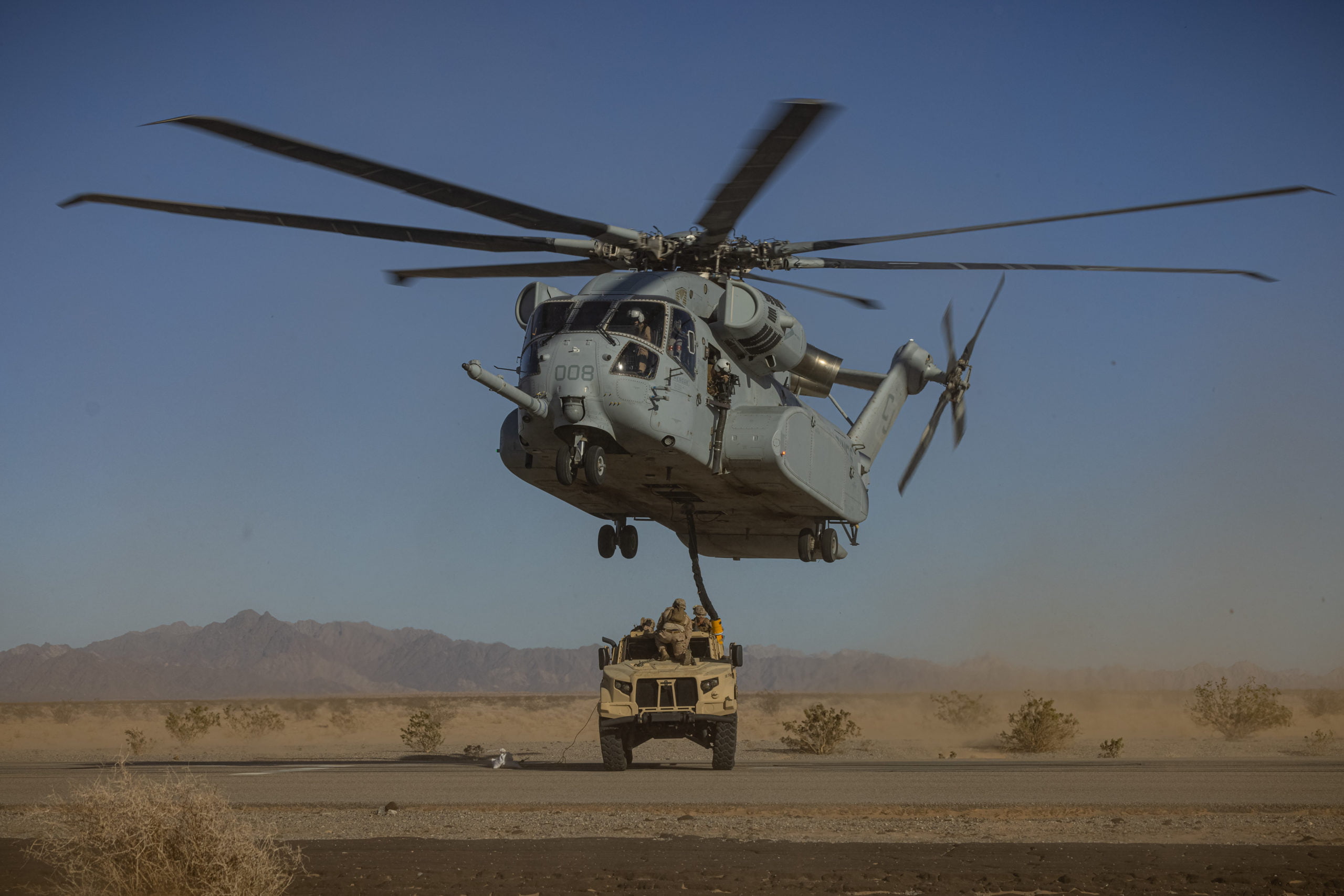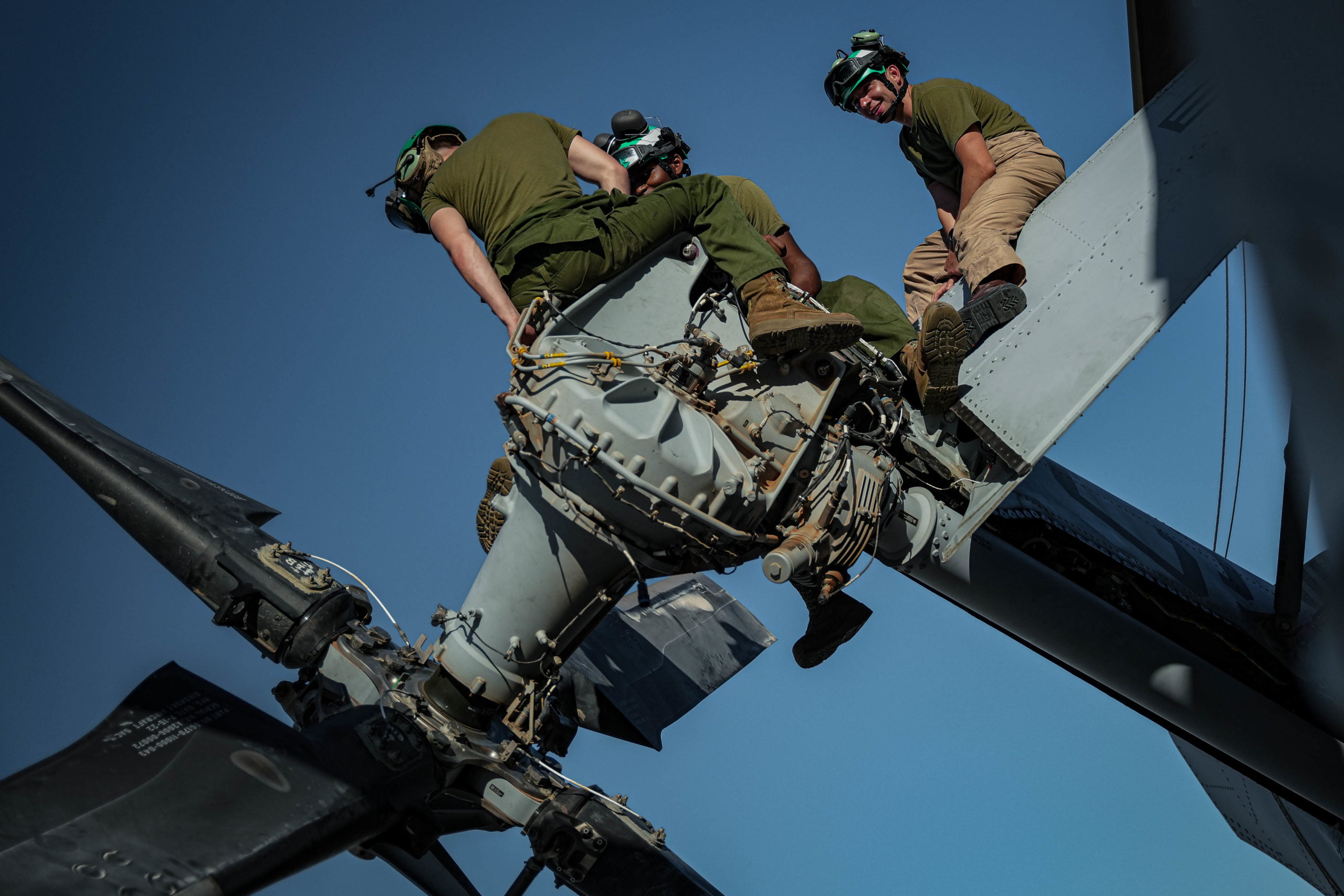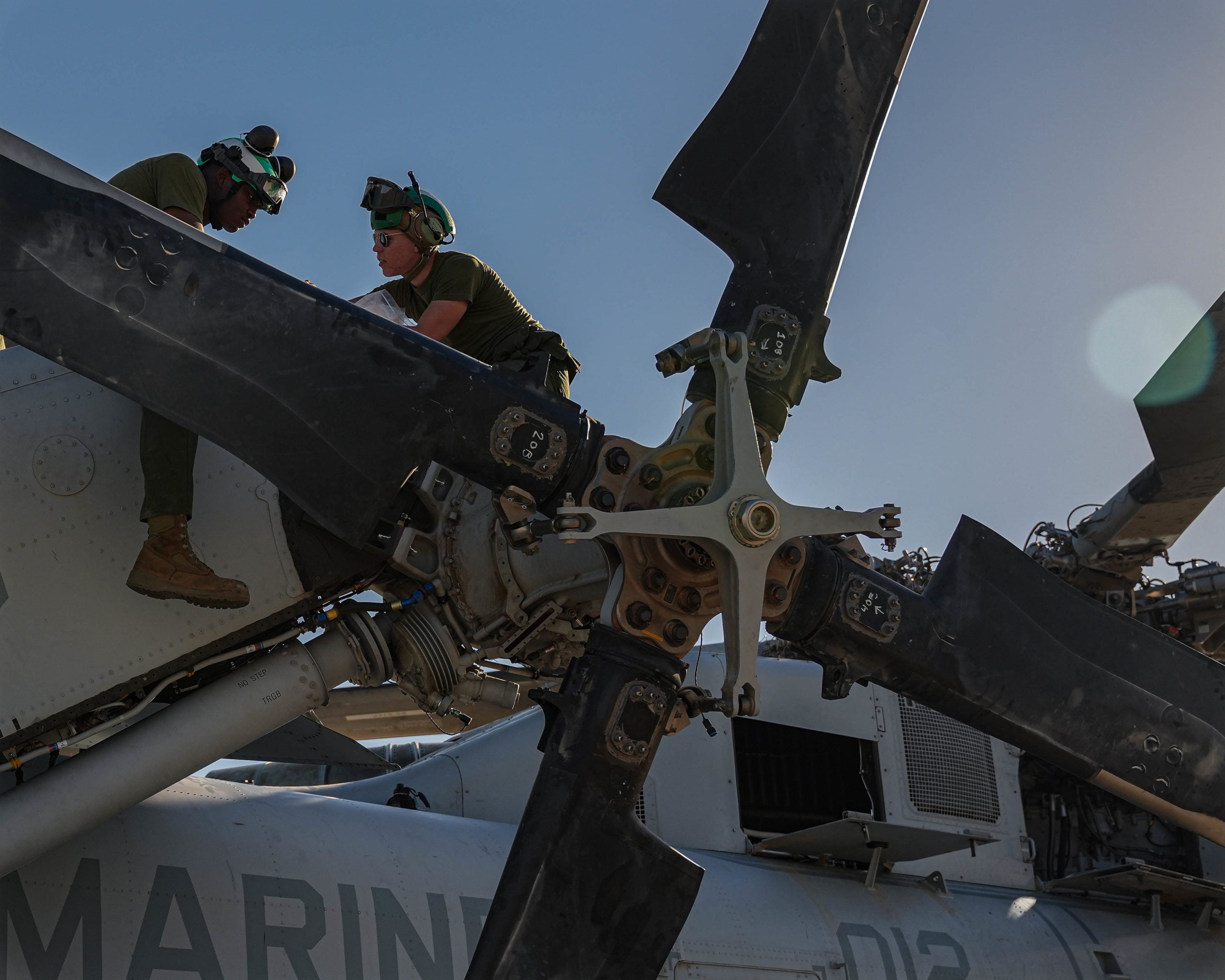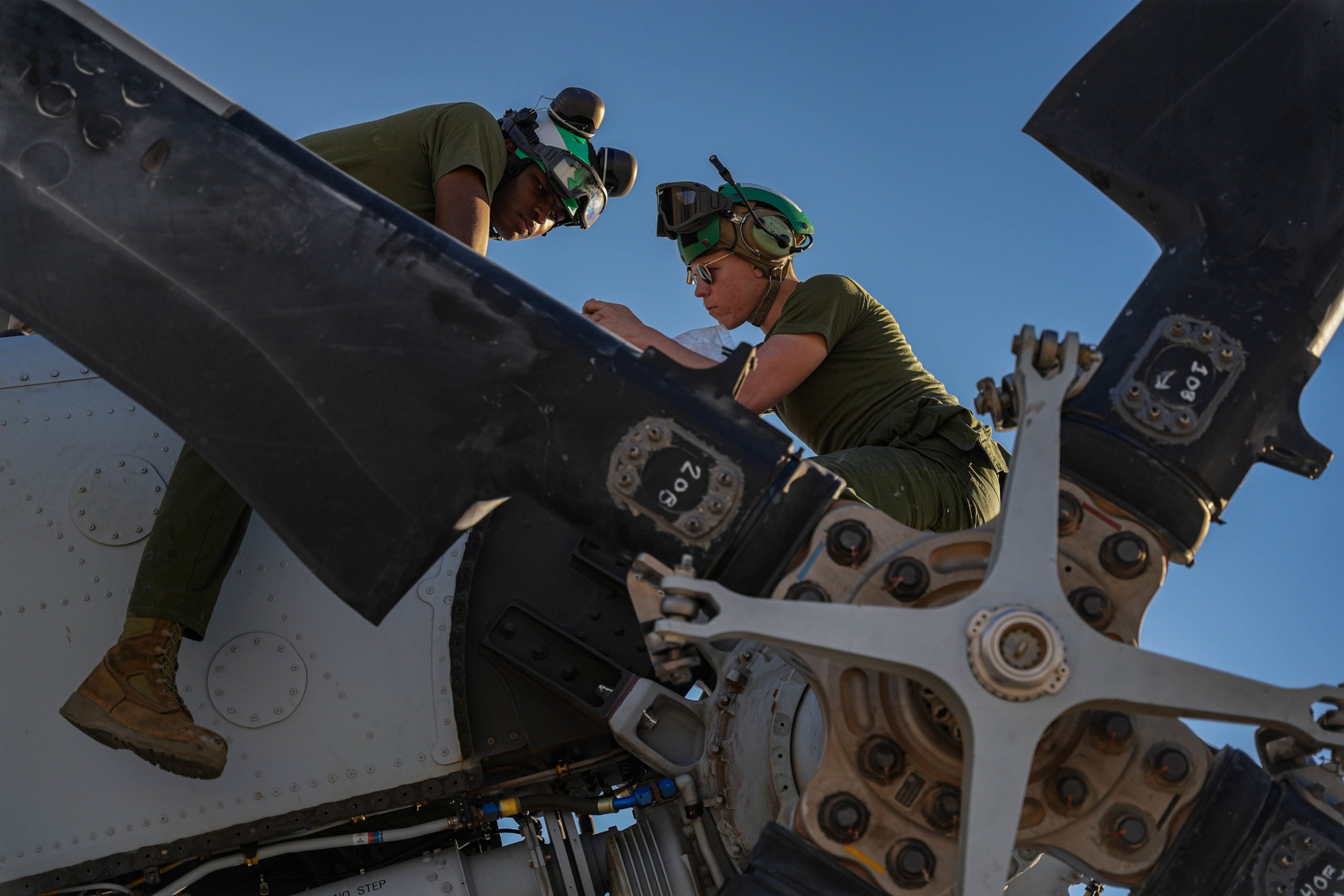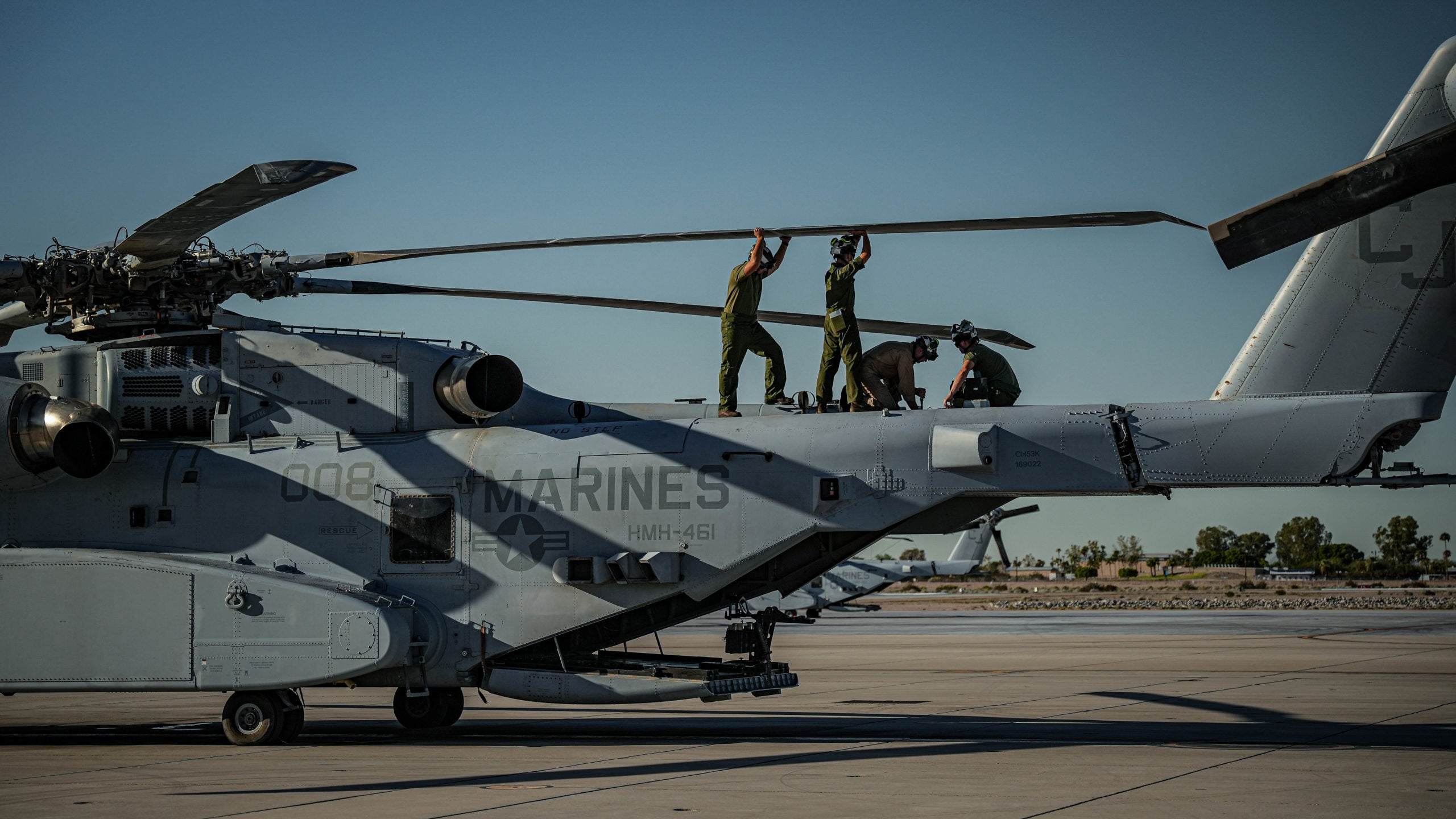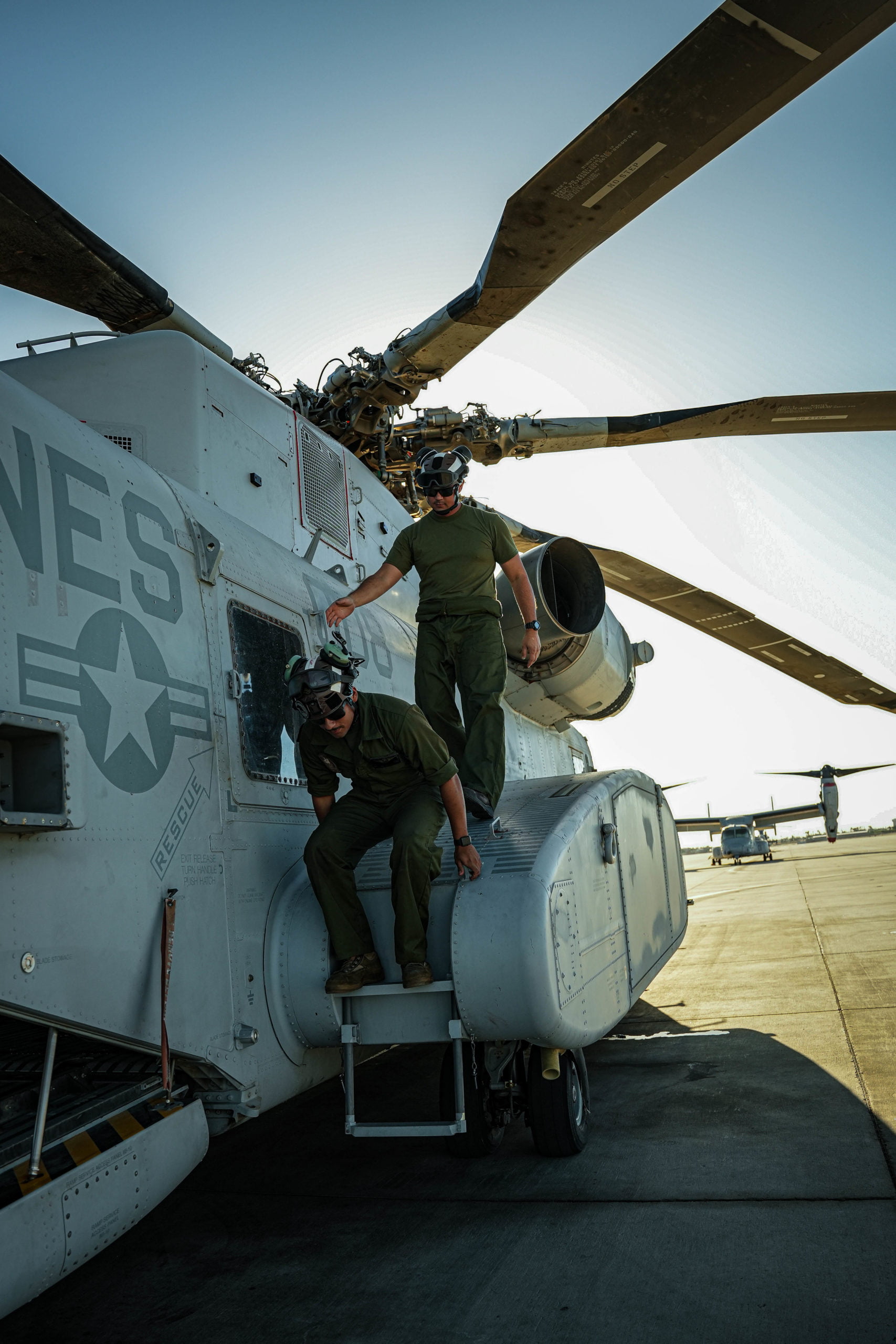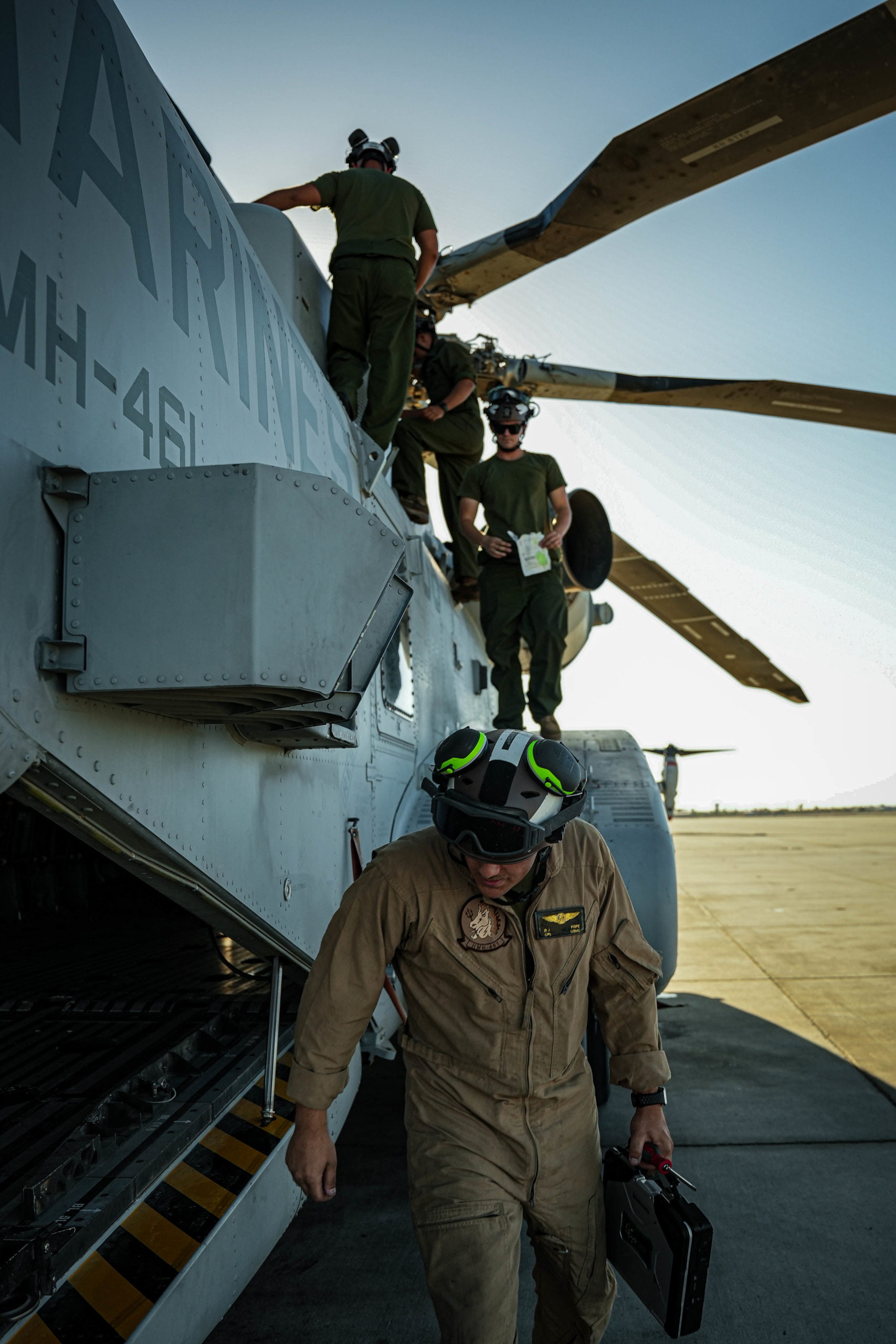By Robbin Laird
During my visit to MAWTS-1 during the first week of November 2023, I had a chance to talk with Colonel Eric Purcell, the CO of MAWTS-1 about the coming of the CH-53K to the USMC. This is the third new air system I have seen come to the USMC since I have been coming to Yuma, but because it doesn’t look as different as the other two did from their legacy ancestors, it is often not fully realized how important it will be for the USMC and the joint force.
Purcell is the first CH-53 pilot to be the CO of MAWTS-1 which is propitious as the CH-53K has been part of this year’s WTIs at MAWTS-1. He has more than 3000 hours on the CH-53E and 130 hours on the CH-53D. He has had two deployments to Afghanistan and two to Iraq, and additional visits to both countries as well.
He noted that he wished they had not called it the CH-53 for the CH-53K is so different from the legacy aircraft. It is designed to fit into the deck space of an CH-53E and to have a reduced footprint for its maintenance as well.
But the big difference is associated with the broader changes across the Marine Corps. When I was last at MAWTS-1 in 2020, they were starting to work on how to enhance the deployability and mobility of the Marine Corps and to do so in formations smaller than the traditional MAGTF. During this visit, my discussions with the department heads underscored how much work they have done in terms of doing expeditionary basing, innovations in Forward Refueling and Re-Arming points and ways to reduce the signature of the deployed force.
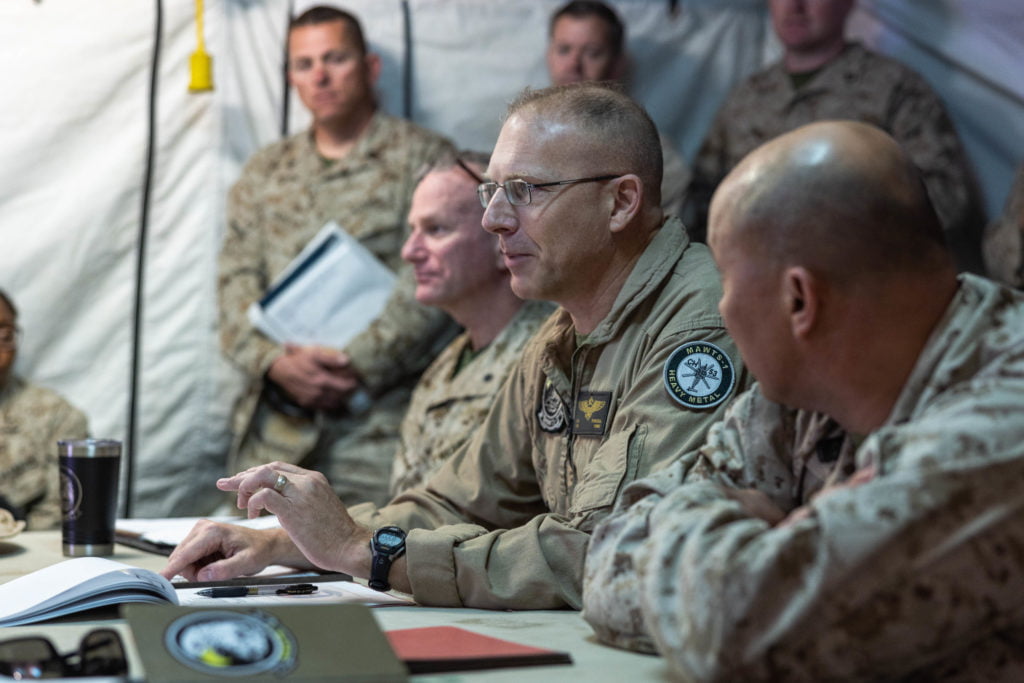
The CH-53K, in Col Purcell’s view, contributed to that in a significant way. He focused on the ability of the King Stallion with its triple hooks to carry significant loads to operating locations without having to land and be on the ground for the time necessary to unload from the interior of the aircraft. He pointed out that the aircraft could carry significant fuel loads – 54,000 pounds of fuel — to locations the F-35B might operate from and could do so with external lift rather than having to land.
Both the Osprey and the heavy lift helo could carry fuel inside and work as fuel providers to aircraft at a FARP. But being on the ground for significant time to do this exposed the aircraft to much greater risk than coming in and dropping off fuel from their external three hook system.
He pointed out that the legacy aircraft two hook system could lead on occasion to “uncommanded” load releases whereby the system on the aircraft would not be able to judge correctly whether loads on the hooks were compromising the safety of the aircraft. Systems on the aircraft prioritized aircraft safety over carrying loads and might jettison a load.
The CH-53K’s systems can correctly determine whether the load being carried by the aircraft affect the center of gravity of the aircraft, which is central to its security, and can make more accurate decisions with regard to the safety of the aircraft.
He noted that the load carrying capacity of the aircraft meant that it could carry an Osprey which might be in a location where it could not get repairs needed to fly safely to a location where it could be repaired. Some of the weight, such as the seats, would have to be removed to do so, but it could be done.
Col Purcell underscored that in Afghanistan and Iraq many of the missions which the CH-53E did were medium lift. The CH-53K is optimized for heavy lift and both the Marine Corps and the joint force need to focus on its unique capabilities to support distributed logistics as no other rotorcraft can do in the force. It is optimized for heavy lift, and it is important to capitalize on its unique capabilities.
The CH-53K can be part of a logistic chain involving cargo aircraft like the C-17, the C-5 and the C-130, in that it can carry 463L pallets and work with fixed wing cargo aircraft to transfer their pallets to the Super Stallion and then deliver them in places only a rotorcraft can go.
The new motors on the King Stallion allow it to operate in conditions where one would not want to operate an aging CH-53E fleet. The power margins of the new aircraft are much greater than the legacy aircraft.
He concluded: “The force will see the impact of the revolutionary design of the CH-53K to carry heavy loads long range and to enhance significantly the logistical capability of the force and to move in and out of objective areas more rapidly than the legacy system.”
Featured Image: A U.S. Marine Corps CH-53K King Stallion helicopter, assigned to Marine Aviation Weapons and Tactics Squadron One, executes an external lift of a High Mobility Multipurpose Wheeled Vehicle during Weapons and Tactics Instructor (WTI) course 1-24 at Auxiliary Airfield II, near Yuma, Arizona, Oct. 3, 2023. U.S. Marine Corps photo by Lance Cpl. Elizabeth Gallagher.


